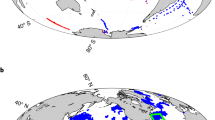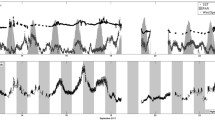Abstract.
Microorganisms are but a few micrometers in diameter and are not visible to the naked eye. Yet, the large numbers of microorganisms present in the oceans and the global impact of their activities make it possible to observe them from space. Here a few examples of how microorganisms can be studied from satellites are presented. The first case is the best known: the main pigment used in photosynthesis (chlorophyll a) can be determined from satellites. These kinds of studies have contributed a tremendous amount of understanding about the distribution and dynamics of primary production in the oceans. Two other examples will concern analysis of heterotrophic prokaryotic production and estimates of dimethyl sulfide (DMS) concentration and flux to the atmosphere. These three processes are of fundamental importance for the functioning of the biosphere. Marine microbes carry out about half of the total primary production in the planet. A substantial fraction of the respiration in the oceans is due to the activity of heterotrophic prokaryotes. Finally, the flux of DMS to the atmosphere is believed to constitute one of the mechanisms by which the biota can regulate climate. The global implications of microbial processes in the oceans can only be addressed with the help of satellites.
Similar content being viewed by others
Author information
Authors and Affiliations
Additional information
Electronic Publication
Rights and permissions
About this article
Cite this article
Pedrós-Alió, .C., Simó, .R. Studying marine microorganisms from space. Int Microbiol 5, 195–200 (2002). https://doi.org/10.1007/s10123-002-0087-7
Received:
Accepted:
Issue Date:
DOI: https://doi.org/10.1007/s10123-002-0087-7




